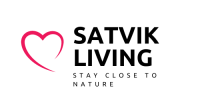Relaxation exercises can reduce stress and slow down in everyday life. We show you classic exercises and decelerating techniques from mindfulness.
Everyday life can often be hectic and stressful. Not only the psyche but also the physical health suffers from permanent tension. It is important to calm down and regain your strength in stressful everyday life.
Relaxation exercises and deceleration techniques can support you in this. There are numerous effective ways you can relax. In the following we present four exercises that you can easily integrate into your everyday life. Take a few minutes and treat yourself to small breaks in everyday life.
1. Relax through breathing exercises
Breathing exercises will help you find relaxation. You can integrate this relaxation exercise into your everyday life and do it at home or in the office. You don’t need any equipment and you only need a few minutes. Relax while sitting or lying down with these two breathing exercises:
Abdominal breathing :
- Place both hands on your stomach at the level of your belly button.
- Close your eyes.
- Consciously breathe in and out into your stomach and against your hands.
- Feel your breath and how your hands go up and down.
- Inhale and exhale seven times.
Respite :
- Focus on your breathing.
- Each time you inhale, count to four, and then hold your breath for three seconds.
- Exhale, counting to four.
- After exhaling, hold your breath again for three seconds.
- You can repeat this exercise five times.
Breathing exercises cause you to automatically relax and your heartbeat to slow down. You can always incorporate this little relaxation exercise in between.
2. Active relaxation exercise: The progressive muscle relaxation
The progressive muscle relaxation (PME) by Jacobsen is an active relaxation exercise. You first tense muscle groups one after the other and then relax them again. By lowering muscle tension, you reduce physical restlessness and relieve tension.
You can do the relaxation exercise lying down or in a comfortable sitting position. Take about 20 to 30 minutes. Close your eyes. Gradually you contract a muscle group for about six seconds and then relax it for about 20 seconds. Proceed in this order:
- Right hand, right arm
- Left hand, left arm
- Face, neck
- Back, stomach
- Right leg, right foot
- Left leg, left foot
3. Relaxation exercise: Decelerate through mindful experience
Mindfulness can help you focus on the here and now and reduce stress. Various slowdown exercises help. Integrate short mindfulness units into your everyday life in which you consciously perceive and pause your environment:
Whether in the morning in the shower, on the way to work or while eating. Just concentrate on what you are doing and what you feel about it: How does the water from the shower feel? What sounds do the water droplets make? How does the food taste? What noises do you hear How does the weather feel on your face?
By arriving in the here and now, you can let your worries rest for a moment and relax. Mindfulness Calendar help you to integrate even more relaxation exercises into your everyday life.
4. Mindfulness meditation for inner calm
Meditation is also one of the mindfulness exercises. You gather your mind and come to rest. You can start the day with a meditation as a relaxation exercise or you can relax with it in the evening.
- Start with two minutes a day and work up to five to ten minutes a day.
- Sit comfortably with your legs crossed and your back straight.
- Close your eyes and focus on your breathing.
- Feel the abdominal wall rising and falling.
- The focus is on your abdominal wall and on your breathing.
- If you find that your thoughts are wandering, do not judge yourself, but return to the here and now to breathing.
5. Integrate relaxation techniques and slowing down into everyday life
Find the relaxation techniques that work best for you. Then it makes sense to repeat relaxation units regularly and to integrate them into your everyday life. This way you will quickly notice a difference and be less stressed. If it is difficult for you, first actively plan the relaxation exercises and make your own appointments in the calendar.
Text Source: Utopia


1 Comment